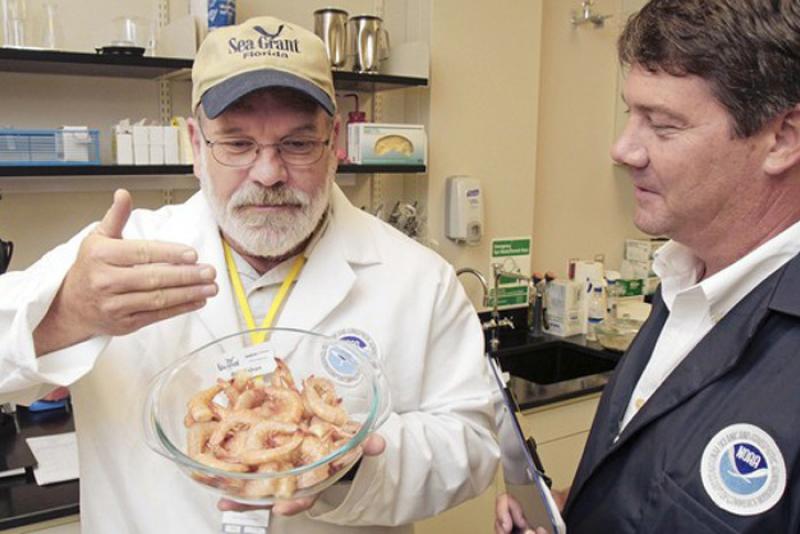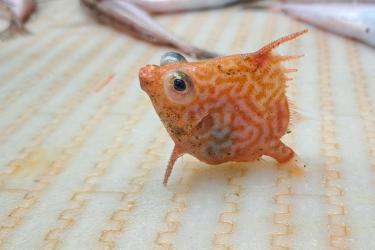Each year, Americans consume several billion pounds of seafood. When seafood products are mislabeled for financial gain, that’s seafood fraud, and Steven Wilson is on the case. Wilson is the Chief Quality Officer for the NOAA Fisheries Seafood Inspection Program. He’s the internal watchdog of the Seafood Inspection Program—Wilson audits the auditors, and he’s tough. With skills in food technology and quality management, it’s hard, if not impossible, to pull the wool over his eyes. Who better to give an overview of the current state of seafood fraud and what the future may hold for the seafood industry?
Another NOAA expert, Monty Berg, is a Supervisory Consumer Safety Officer in the NOAA Seafood Inspection Program’s Southeast region. When it comes to seafood fraud, Berg has seen it all. When "On the Line" spoke with him, he gave an up close and personal look at the current state of seafood fraud, and an optimistic view of the future. Berg’s advice to consumers: “Enjoy fish”.
Along with NOAA Fisheries, the U.S. Department of Agriculture Food and Drug Administration and the U.S. Department of Homeland Security Customs and Border Protection also play key roles in detecting and preventing seafood fraud.
Steven Wilson, Monty Berg, and their partners at NOAA and other federal agencies work with U.S. importers, exporters, wholesalers, processors, restaurants, and retailers to help ensure that the seafood that lands on your dinner plate is exactly what you purchased.
"On The Line" caught up with Wilson and Berg at the International Boston Seafood Show held in March 2013 in Boston, Massachusetts.
To learn more about NOAA's efforts to combat seafood fraud, visit:


